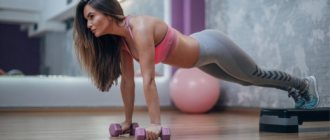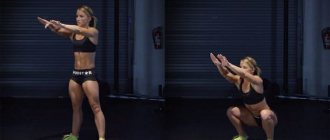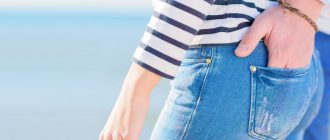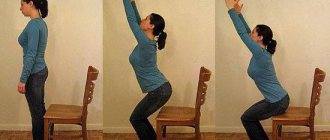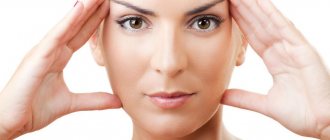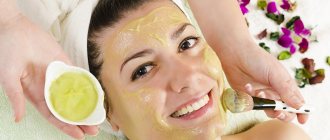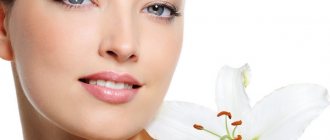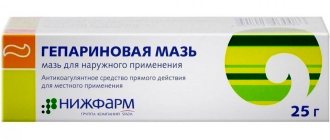My legs are like Sarah Jessica Parker . Thin, not the worst, but you can’t call them perfectly straight. I don’t know if Parker can boast of a combination of longitudinal and transverse flat feet , but this is what provided me with this shape. When I stand relaxed, my knees turn inward and my calves turn outward, and just below the knees there is quite a lot of space between my legs. And even lower, my shins meet my ankles, which are rolled inward, and form quite noticeable angles with them.
Ideal leg shape
There are many opinions regarding the correct shape of the legs, but all this is from the realm of theory. When determining curvature, specialists use A. A. Artemyev’s classification, which he proposed in 2001.
The doctor was the first to talk about the parameters of the correct form from a practical point of view. The beautiful legs have three spindle-like spaces between the inner sides of the legs. These gaps are limited by the perineum, closed knees, muscles of the upper leg and ankle (Fig. 1).
Pull-up machine
An inversion board will help you stretch your shin a little. The simulator allows you to develop the muscle tissue of the spine and large joints. The axial load is removed from the joints and spine during exercise. This allows you to normalize blood circulation and trophism of soft tissues.
Regular exercise promotes the growth of cartilage. Thanks to the inversion board, you can increase the length of the bones by 5-7%. To correct crooked legs, you need to hang on the horizontal bar every day for 10-15 minutes. The time is increased gradually - after 30 days the interval can be increased to 30 minutes. You can also exercise on a leg extension machine.
Algorithm for executing the complex:
- installation of the simulator for yourself;
- placing feet at a distance of 30 cm from each other;
- slow flexion and extension of the legs.
To correct the outer contour of your legs, you need to turn your feet inward when performing the exercise. At the initial stage, weighting agents are not used.
Leg shape
If you go to a full-length mirror and place your feet close together, you can see three windows. If you observe such a spectacle, then begin to rejoice - your lower limbs are perfect. Otherwise, we can talk about curvature of the legs, which comes in three types.
Fig.2. a – correct shape, b – true O-curvature, c – false deformation, d – true X-curvature.
1. O-shaped. With this anatomical feature, it is impossible to bring the knees together without effort. as a result, a gap is formed in the form of the letter O, limited by the jointed ankles and groin.
2. X-shaped. In this case, it is not possible to bring the ankles together with the hips closed. We are talking specifically about a free stance, when the patient does not try with all his might to bring his legs to the correct position. 3. False. The first two types are caused by bone deformation, but in this case the bones are straight. The problem is the improper distribution of soft tissue. The legs do not meet at the top of the shins, but touch at the ankles, knees and thighs. Externally, the legs look crooked, although in fact they are not.
Artemyev believes that the true curvature of the legs occurs due to the curved bones of the lower leg, namely the tibia. In some cases, the curvature is explained by changes in the knee joint, which are caused by the anatomical features of the condyles. (Fig.3).
Rice. 3. Reducing the height of the condyle leads to axial deformation of the joint.
In the case of normal body proportions, 10-15% deviation from the articular axis is considered acceptable. But this change will cause a slight curvature of the legs, which will be considered a cosmetic defect. Practical criteria for assessing the shape of the lower extremities, which Artemyev proposed, are also needed to determine how to correct the situation.
Fig.4. Different shapes of the legs due to small axial deformations.
a) “ideal” shape of legs; b) true O - shaped deformation of the legs; c) false curvature of the legs;
d) true X - shaped deformity of the legs.
Classification and criteria proposed by Artemyev A.A. are necessary not only to determine the type of leg curvature, but also to choose a method for correcting the identified pathology.
Exercises to correct O-shaped curvature
The following exercises help with this type of curvature:
Examples of exercises to correct curvature of the legs
- Walking on the inside of the foot.
- Walking on your heels with your toes facing out.
- Squats in a “ballet” position: toes pointed out as far as possible.
- Exercises for the adductor (internal) muscles of the thigh and lower leg: free abduction of the leg to the side in a standing position;
- leg abduction with shock absorber - rubber cord;
- raising the leg to the side while standing sideways to the support;
- leg lift while lying on your side.
- Lie on the floor with your feet against the wall. When sitting down, reach your hands towards the wall.
Sports preferred for O-shaped curvatures:
- skating;
- skating skiing;
- ballet dancing;
- swimming.
How to correct crooked legs based on the shape of your legs
If you don’t want to hide imperfections, then you need to go to a surgeon. True curvature is corrected by orthopedic traumatologists during osteoplastic operations. This is not so much about eliminating a cosmetic defect as it is about preserving your health. Even a slight curvature of the bone changes the load on the joint, leading to severe diseases.
In case of false deformity, a plastic surgeon corrects the shape of the legs by injecting the patient’s own fat or installing implants. As a result, the inside of the legs becomes full, and the window between the knees and ankles disappears.
Massage
Massage is usually performed for hallux valgus.
The specialist works on several areas:
- back – rubbing, stroking, kneading, comb-like sawing;
- lumbosacral region - stroking, light pressure or shifting, vigorous rubbing;
- buttocks – circular stroking, active rubbing, kneading with both hands, light patting;
- the back of the thighs - stroking (from the popliteal fossa to the thigh), kneading with both hands, rubbing, light blows;
- back surface of the lower leg – stroking, rubbing, kneading, vibration shocks, stretching;
- knee joint - stroking, light pressure or rubbing, clapping.
It is necessary to regularly work out the Achilles tendon, the front surface of the thighs and shins. The specialist should also pay special attention to the feet. The massage ends with stroking.
Rickets
Rickets
is a disease in children that affects the bones and causes bowed legs and other bone deformities. Children with rickets do not get enough calcium, phosphorus or vitamin D, which are important for healthy bone growth.
Dietary rickets is unusual in developed countries because many foods, including dairy, are fortified with vitamin D. Rickets can also be caused by a genetic abnormality that prevents vitamin D from being absorbed properly. This form of rickets can be inherited.
Useful video - Dr. A. Artemyev about the dangers and consequences of X-shaped legs. Part 1
Exercises to correct X-shaped curvature
Correcting the shape of X-shaped legs will also require regular physical exercise. Before training, “warm up” your muscle tissue.
- Walk in a circle on your toes.
- While standing still, curl your toes as if you want to hide them under your foot.
The goal of gymnastics to eliminate “X” marks on the legs is to develop and strengthen the abductor muscles of the outer femoral surface.
- Get on your knees and walk around the room in a circle.
- Get on all fours. Focusing on your knees and elbows, make successive swings with your extended right and then your left leg.
- Hold a ball between your knees and do deep squats. If the movement is difficult at first, squat without the ball.
- Stand with one leg bent at the knee. Grasping your knee with your hand, pull it up as high as possible. Then use your hand to turn it to the side. Stretch the muscles in this position for 30-40 seconds. Switch legs and repeat the movement.
- Sit on the floor with your legs spread out cross-legged. Slowly press your hands on your knees, trying to bring them as close to the floor as possible.
- Lie on your stomach. Bring your feet together, keeping your knees as far apart as possible. Try to stay in this position for 2-3 minutes. With each lesson, the time spent in a static position is increased by 1 minute. Ultimately it should be 10-15 minutes.
It is recommended to perform this complex three times a week. The exercises require 3 sets of 15 reps each.
An excellent addition to regular training would be yoga, breaststroke swimming and horseback riding and cycling.
Medical examination
Your doctor will start with a thorough physical examination of your child.
If your child is under 2 years of age, is in good health, and has symmetrical arching (the same curve in both legs), then your doctor will likely say that no further testing is needed at this time.
However, if your doctor notices that one leg is more bent than the other, he or she may recommend taking an X-ray of the lower leg. An X-ray of your child's legs while standing may show signs of Blount's disease or rickets.
If your child is older than 2 1/2 years old at the first visit and has symmetrical leg bending, your doctor will likely recommend an X-ray. Your child is more likely to have Blount's disease or rickets at this age. If an X-ray shows signs of rickets, your doctor will order blood tests to confirm the presence of the disease.
Correction belts
Corrector belts help straighten your legs in a few weeks.
User manual:
- 3 belts (for hips, knees and shins) need to be laid out on a flat surface;
- place a small pillow between your knees;
- tighten the knee and shin straps;
- Having assumed a comfortable position, fasten the hip belt.
The corrector should be worn daily for 2-3 hours. The belt should not be too tight: if a person experiences discomfort, then the corrector should be loosened slightly. Experts recommend measuring the distance between the right and left limbs before using the corrector.
A positive result will be noticeable after 3-4 weeks of daily wear. While wearing the harness, you can perform simple exercises to straighten your legs (lifting your torso and legs). The straps are made of lycra and neoprene. They vary in length: the shin strap is 53 cm, the knee strap is 62 cm, and the shin strap is 70 cm.
Shoes
Shoes will not help straighten your feet. With its help you can hide the defect. Experts recommend abandoning ankle boots and short shoes in the autumn-winter period. Visually they will make the shin more crooked.
When choosing shoes you need to be guided by the following criteria:
- Over the knee boots will help hide the curvature of the legs;
- stocking boots should be in a contrasting color with leggings or tights;
- It is best to purchase shoes from suede and velor.
For girls with crooked legs, light boots without sparkles, sequins and other decorations are suitable. For women with full legs, experts advise purchasing black, dark brown, gray or dark blue tights. Boots must have a straight and wide top. If your legs are truly curvature, it is better to avoid shoes with heels, platforms, or tread soles. Pointed-toe shoes are also not suitable.
